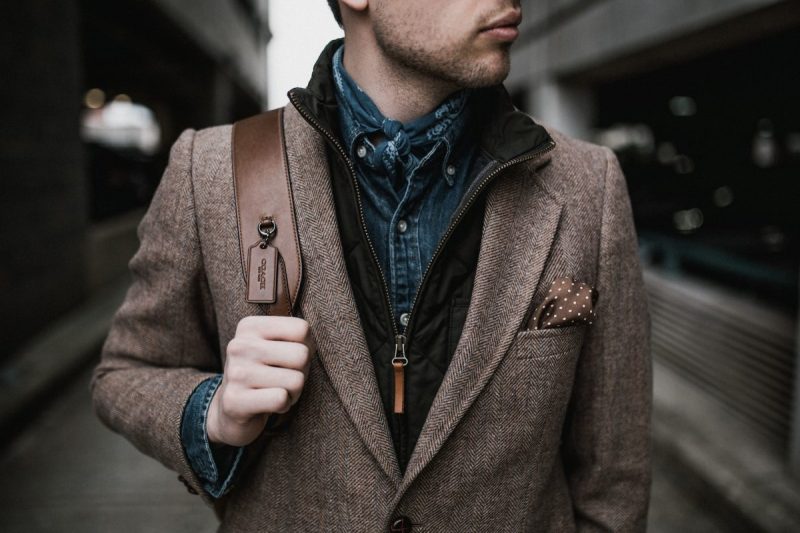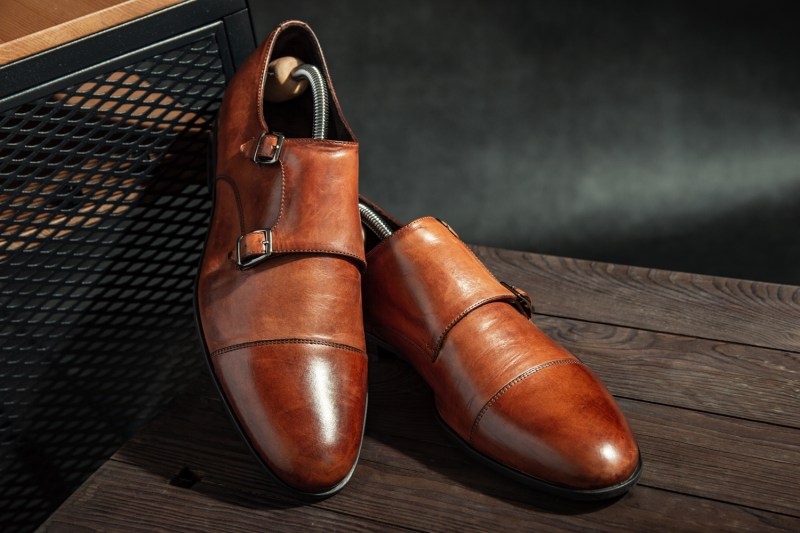Business professional. Business casual. Smart casual. What does this all mean? It’s a code of conduct for what you wear to the office when you have a grown-up job. Wait — that is what it is … what does it mean? What is business casual? What is business professional? Simple. It’s different for everyone. Oh, is that not simple? You’re right, it is a horribly complicated collection of policies that every company develops on its own independent from each other.
So how do you know what to get? How do you know what business professional attire to get? The trick is to stay as classic as you can until you know a little more about the company and the role. Then you can branch out. Don’t worry; we’ll never leave you hanging. We have a handy guide here to help you get your feet under you.
Why is your professional wardrobe important

One of the core lessons we learn in our youth is never to judge a book by its cover; it’s what’s on the inside that counts. Well, we’re here to tell you that that is terrible advice. It’s human nature to make up your mind about someone the moment you meet them.
When you enter a job interview, the interviewer subconsciously makes a lot of judgments about you on the spot. Think of it as a scale of 0–10, where 10 gets you hired and zero gets you pushed to the back of the unemployment line. The moment your interviewer lays eyes on you, you are either a 0 or a 10, and the rest of the interview will likely only reaffirm that number.
If you think it gets better once you have a job, guess again. It actually happens more often. As you move up in your company, you have the people above you and below you in rank going through the same process. This is why your work clothes can make all the difference and even make you more money. Here’s how.
- A professional wardrobe gives you confidence. People respond and follow those who are confident in themselves.
- It gets you noticed. Standing out against the rest is the best way to get seen by people looking for leadership.
- It makes you look competent and like a leader. Ever heard the phrase “fake it ’til you make it?” Even if you’re not 100% sure what you’re doing, looking like you do can give you a little bit of time to figure it out.
So how do you accomplish all of this? With a great first impression. Once you move beyond the dreaded business casual consisting of chinos and the polo (when you’re finished trying to look like Jake from State Farm), you need to upgrade your wardrobe to show your superiors that you mean business and can be trusted with their company. That way, you’ll also be able to show your team that you’re the person to follow. Keep reading to find out how.
Tailored wardrobe

The first step to upgrading your professional wardrobe is to address your tailored clothing. While that can mean a few different areas, the most important is the suit. Most men, especially if they have been in the professional world long enough to get promoted, have at least one suit. Here’s what you should have, in order of priority.
You should start with the four-legged stool. That means you will acquire a charcoal suit first, which will be your most versatile suit. It will look great in the office with lighter colors and will serve as a substitute for a black suit for anything after 6:00 p.m. Next is the blue suit, which will be your best office suit, followed by the light gray suit for office wear and more elevated casual events. Finally, there’s your blue sport coat.
Once you have those, you should look into adding the following:
- Brown suit, preferably in a deep brown. This suit will look great in the winter especially, but if you stick to wool, it can work in the summer months too.
- Tan suit. If you elect to go with a heavier fabric in the brown, the tan is its opposite for the warmer months. It will be similar to the light grey and pair well with virtually any shirt and tie combination.
- Black suit. Now it’s time to get a black suit and relegate your charcoal suit to the office. This will be your funeral and formal event suit. Note: If you have the kind of job where you may require a tuxedo, spring for that instead of a black suit.
- Patterned suit. Now that you have all the basic colors of suits, you can have more fun with patterns. These patterns will give your wardrobe depth and allow you to break up the monotony of the solid suits day in and day out.
There are a few patterns to start with:
- Pinstripe, which has a vertical stripe running the entire length of the suit and looks great at the office;
- Windowpane, which crosses vertical stripes and horizontal stripes to create large squares (it’s great for the skinnier man to give him some breadth); and
- Houndstooth, which looks similar to small dots but has pointed edges on one side. This is a classic English pattern that will never go out of style.
Caring for these suits is simple. First things first, brush them after every wear to remove dirt or debris so it doesn’t sink into the fibers. Second, hang them up immediately, preferably outside the closet for a day, to let them air out (especially in warmer months) so they remain fresh longer.
Finally, your suits should only be dry cleaned once every six months. If you have this many suits, that allows you about 10-15 wears before you take them in. This will increase the suit’s lifespan, and these suits will last you for a long time, probably longer than your body is maintained. You’ll have to worry about gaining weight before a suit breaks down.
Dress shirts

Dress shirts are a little easier to manage because they’re more easily changed out than suits. However, like suits, there are certain shirts you should start with. Here’s the best way to upgrade your shirt wardrobe for the office.
- White shirts. You can never have too many. Really, these will be your best friend. They will go with every suit and tie in your closet. However, you want to start with no fewer than three; ideally, you want five.
- Light blue. Some places call it robin’s egg blue. This is how you’ll break away from that basic and boring white shirt. The blue will add depth to your wardrobe but will also go with virtually all your suits and ties as well. Get yourself two of these.
- Ecru. Also called cream, these shirts are slightly off-white and look great in the winter months as a darker version of the plain white shirt. If it’s a cloudy day, swap the white shirt out for the ecru.
- Patterned. Here’s the fun part about dress shirts: They come in all sorts of colors and patterns. If you’re wearing them to the office, you should stick to basic patterns like checks and stripes (skinnier men should opt for checks to give breadth while heavier men should opt for stripes to slim them out). There’s an art to wearing patterned shirts with patterned ties, but that’s a conversation for another day.
Collars can also be a deeper conversation, but the basic rule of thumb is that long, narrow faces should go for the spread collar while round faces should go for the point collar, all in the name of balance. Old-school guys and engineers will hate to hear this, but button-down collars are for looks without ties and are more casual. Try to avoid them at work and wear them in more casual situations.
Ties

The necktie is a time-honored staple of the men’s dress wardrobe. It brings with it a level of class and sophistication that’s unrivaled in the professional world. Also, here’s a fun tip: When worn with a collared shirt, the two come together to form an arrow that points to your face, bringing others’ attention above the neck. Everything has a reason!
You should start with the three basic colors for your ties: Red, blue, and yellow. Red is the power tie and promotes a level of authority; there’s a reason presidents wear them. Speaking of politicians, blue is a color that promotes trustworthiness, so that’s why they often wear blue ties as well. While red promotes authority and blue encourages confidence and trust, yellow is their more approachable cousin.
When it comes to patterns, simplicity is best in the workplace. Small polka dots or simple stripes make the best combinations. If you’re ready for some fun and artistic expression, a paisley tie can brighten any outfit. Keep in mind, though, that the point of a tie is to keep the attention above the neck, not below, so leave those novelty ties at home.
Sport coats

When it comes to sport coats, the goal is to find a jacket that dresses up denim or dresses down a shirt and tie. If you have denim Fridays at the office, you’ll turn to your sport coat when you want to stand out in the office. A sport coat is essentially a suit coat without matching pants. You can spot the difference between these and blazers because a blazer typically has metal buttons that are either gold or pewter colored. A blazer is more casual than a sport coat.
A navy sport coat is part of the four-legged stool and is the first one you should buy. It looks great with tan dress pants and dress denim, and it’s what you’ll wear those button-down collared dress shirts with. Once you have that, you’ll want to move on to the same colors as your suit jackets in this order:
- Brown. This is the offset to the blue dress pants and is the most casual of the group.
- Light gray. This one goes with almost any dress pants you own and is perfect for the Saturday team-building function at the park.
- Tan. Summer months get hot, and this is the jacket that will keep you cool. It’s also more versatile than brown.
Feel free to get these jackets in patterns. These are meant to be more casual so that you can express yourself more with them. One thing to remember, though, is that the crazier the pattern, the more basic the rest of your outfit should be.
Dress pants

These aren’t your chinos; dress pants are elevated versions of those cotton pants. Just like the sport coat is a suit jacket without pants, the dress pant is the suit pant without a jacket. These should be made of wool and have a crease down the front, and they are dry-clean only.
There are seven different colors of dress pants you should invest in to have a complete wardrobe. This doesn’t include any pants with a pattern; those are extra (and extra fun if done right).
- Black
- Charcoal
- Light gray
- Navy
- Brown
- Olive
- Taupe
These pants are meant to be worn with your sport coats, and the colors are specific to work with any sport coat you add to your wardrobe. Don’t wear any same-colored ensembles. If you wear brown pants with the brown sport coat, it will look like you tried to create a suit and missed the mark. Contrast is your friend.
Dress shoes

Dress shoes are what keep you grounded at work. Seriously, they’re what touch the ground, and comfort is essential. Investing in a good pair of quality dress shoes will be the best decision you ever make when elevating your wardrobe. While updating your closet can be expensive, if you’re going to splurge anywhere, do it on your shoes.
There are three colors you want when shopping for dress shoes:
- Tan. These light-brown dress shoes will be the ones you wear more often than any of the others. They’re the ones you should be wearing with your charcoal suit to keep it light for the office, and they look stellar with a navy suit.
- Brown. Darker brown shoes can be worn with any suit except black. Charcoal is a little dodgy but can sometimes work. Similar to the ecru shirt, these are the ones you wear for those dark and dreary days.
- Black. Of course, every man needs a good pair of black dress shoes. While you can get different designs and broguing in the others, the black shoes should stay plain-toed so they look more formal when needed.
When you buy your shoes, you should always try to get polish in the same store. The salespeople there should know what polish works best with the individual shoe.
Accessories

Last but not least, details matter. When you finish off an outfit with the best accessories, you send a message. You’re saying that you finish things, pay attention to detail, and can be trusted to put the same care into your work. There are three places you need to focus on when updating your accessories.
- Belts. Similar to the shoe polish, when you buy your shoes, you should look for a belt that matches them. It doesn’t have to be exact because they will be three feet from each other, but it should be passable. If you have the three pairs of shoes above, you should have three belts to match.
- Watch. We’re not saying you should run out and buy a Rolex with your first paycheck after a promotion, but you should definitely upgrade your watch. If you’re wearing a watch with a leather band, it should match the color of your belt. So you should have three watches, and which one you wear will depend on the rest of your outfit. The other option is to go with a metal band; silver is the most versatile choice.
- Last but not least, pocket squares. These are a throwback to when men always carried handkerchiefs. Please don’t blow your nose in your silk pocket square. The rule of thumb here is that complementing the shirt is professional, and complementing the tie is formal. You should never match these; you don’t want them to look like they came in a box set.
That’s it. You have all the information you need now, and hopefully, you’ve followed it and have the wardrobe to make yourself a 10 the moment you walk through the door. Whether you’re being watched by your team and looked to for guidance or your superiors are evaluating you for another promotion, you’ll have the confidence to succeed day in and day out. Now you just have to do the work.




